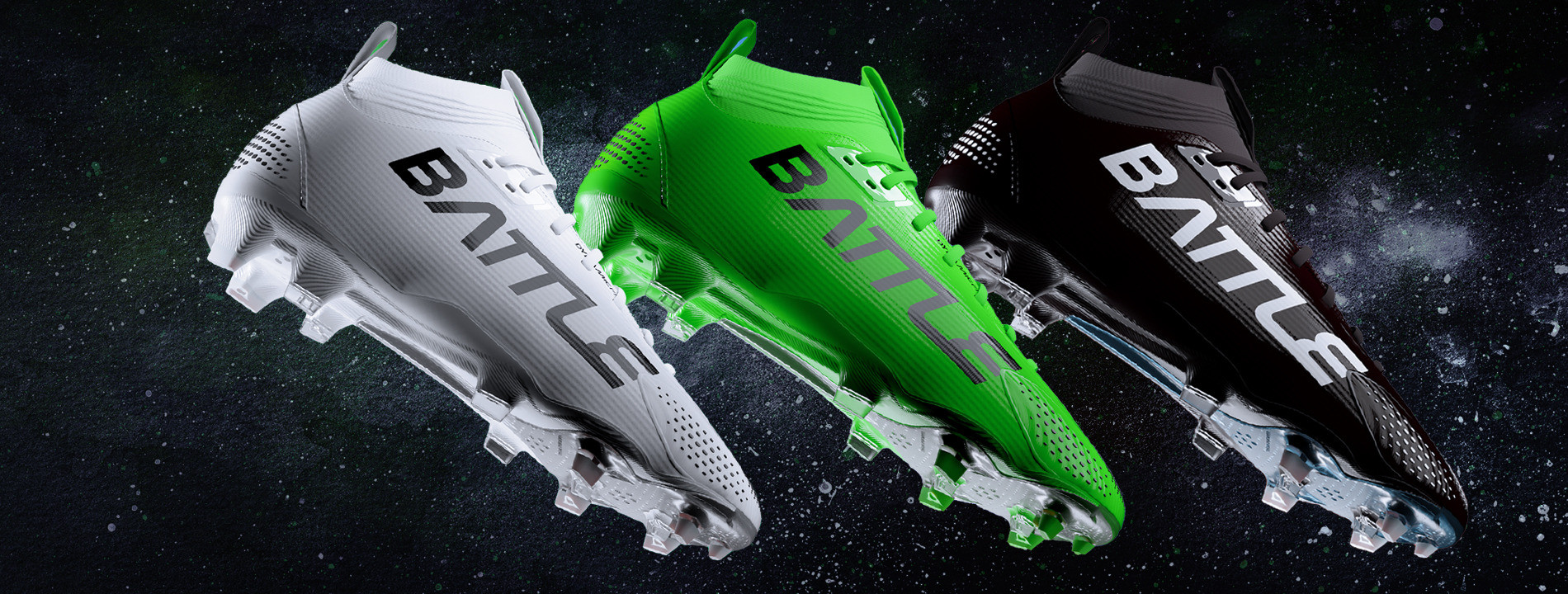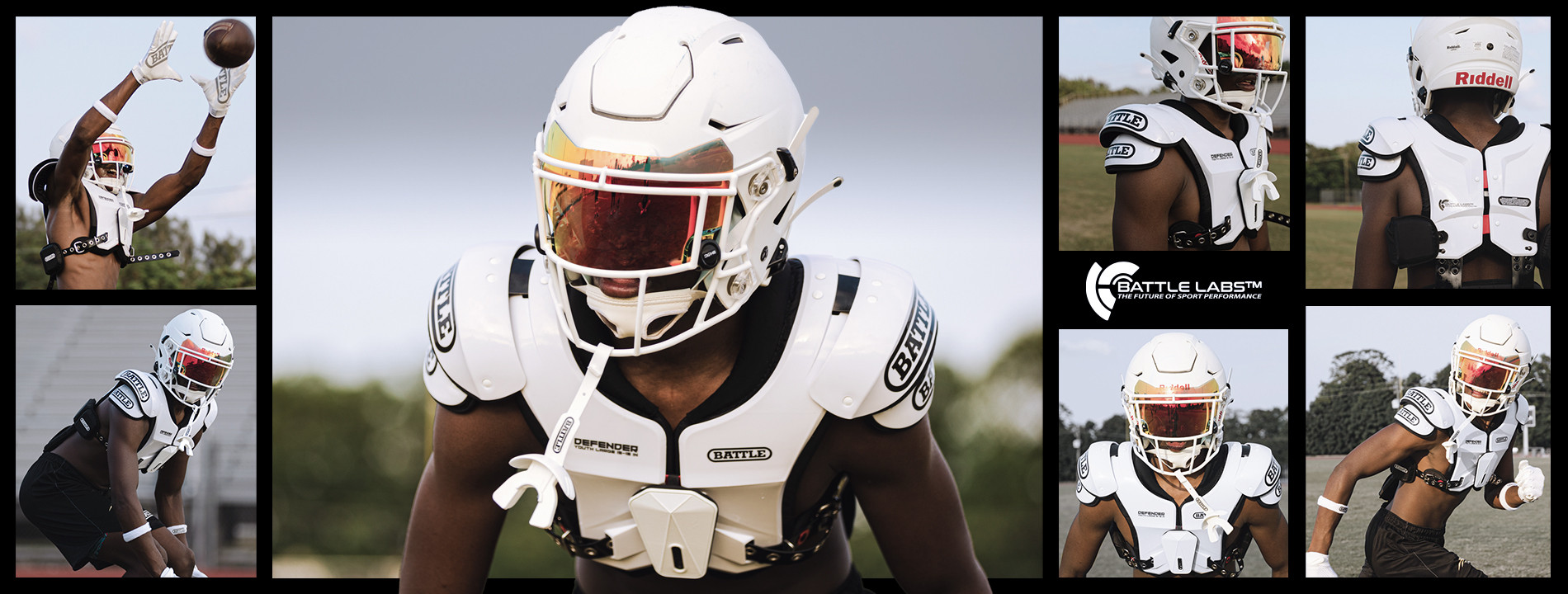Are you gearing up for the football season and wondering what Football Gear you need to stay safe and perform your best? This guide breaks down the essential equipment, accessories, and apparel every football player should consider. Discover the must-have items to elevate your game and ensure optimal protection, with insights from industry experts and resources available at CAUHOI2025.UK.COM.
1. Understanding Essential Football Gear
Football is a physically demanding sport that requires players to be adequately protected. The right football gear not only enhances safety but also boosts performance and confidence on the field. Knowing what equipment is essential can help players and parents make informed decisions.
1.1. Helmets: The Foundation of Protection
The helmet is arguably the most critical piece of football gear. It protects the head from severe injuries, such as concussions and skull fractures. A properly fitted helmet is crucial for optimal protection.
-
Key Features: Look for helmets certified by the National Operating Committee on Standards for Athletic Equipment (NOCSAE). These helmets undergo rigorous testing to ensure they meet safety standards. Features like inflatable padding, adjustable straps, and a secure chin strap are essential for a snug and comfortable fit.
-
Expert Insight: According to a study by Virginia Tech, helmet ratings can significantly impact concussion risk. Choosing a helmet with a high rating can reduce the likelihood of head injuries.
1.2. Shoulder Pads: Shielding the Upper Body
Shoulder pads protect the shoulders, collarbone, and upper torso from impacts. They come in various styles, each designed for specific positions and levels of play.
-
Key Features: Consider the position you play when selecting shoulder pads. Linemen typically need more robust padding than quarterbacks or wide receivers. Look for pads that offer a good range of motion without sacrificing protection. Features like cantilever designs and adjustable straps can enhance comfort and fit.
-
Expert Insight: Research from the American Academy of Orthopaedic Surgeons emphasizes the importance of properly fitted shoulder pads in preventing shoulder dislocations and other upper body injuries.
1.3. Mouthguards: Protecting Teeth and Reducing Concussion Risk
Mouthguards are essential for protecting teeth and reducing the risk of concussions. They absorb and distribute impact forces, minimizing potential damage.
-
Key Features: There are several types of mouthguards, including stock, boil-and-bite, and custom-fitted options. Custom-fitted mouthguards offer the best protection and comfort, as they are specifically molded to the individual’s teeth. Look for mouthguards that meet American Society for Testing and Materials (ASTM) standards.
-
Expert Insight: A study published in the Journal of Athletic Training found that wearing a mouthguard can significantly reduce the severity of concussions in football players.
1.4. Protective Cups: Vital for Male Athletes
Protective cups are essential for male athletes to protect the groin area from impact. They provide a layer of defense against potential injuries.
- Key Features: Look for cups made from high-impact resistant materials with a comfortable and secure fit. Ensure the cup stays in place during movement to provide consistent protection.
1.5 Thigh, Hip, and Knee Pads: Added Lower Body Defense
These pads offer extra shielding against bruises and impacts on the field.
- Key Features: For thigh and hip pads, seek out models that integrate easily with football pants and provide ample coverage. Knee pads should be durable and flexible, allowing a full range of motion without compromising safety.
2. Enhancing Performance with the Right Football Gear
Beyond essential protective gear, several accessories and apparel items can enhance a player’s performance and comfort.
2.1. Football Cleats: Ensuring Grip and Agility
Football cleats provide the necessary traction for quick movements and changes in direction. The right cleats can improve a player’s agility and prevent slips and falls.
-
Key Features: Cleats come in various styles, including molded, detachable, and turf shoes. Molded cleats are suitable for most field conditions, while detachable cleats offer versatility for different surfaces. Turf shoes are ideal for artificial turf fields. Consider the playing surface and position when selecting cleats.
-
Expert Insight: According to a study by the National Federation of State High School Associations (NFHS), wearing appropriate footwear can reduce the risk of ankle and knee injuries.
 Three pairs of football cleats in white, green, and black on a dark background, perfect for improved traction.
Three pairs of football cleats in white, green, and black on a dark background, perfect for improved traction.
2.2. Football Gloves: Improving Grip and Control
Football gloves enhance grip and control of the ball, especially in wet or cold conditions. They are particularly beneficial for wide receivers, quarterbacks, and running backs.
-
Key Features: Look for gloves made from synthetic materials with a sticky palm surface. The gloves should fit snugly without restricting movement. Some gloves also offer additional padding for impact protection.
-
Expert Insight: Research from the University of North Carolina at Chapel Hill indicates that wearing football gloves can improve catching performance by up to 20%.
2.3. Compression Apparel: Enhancing Muscle Support and Recovery
Compression apparel, such as shirts, shorts, and sleeves, provides muscle support and improves blood circulation. This can reduce muscle fatigue and enhance recovery.
-
Key Features: Look for compression apparel made from moisture-wicking materials to keep you dry and comfortable. The apparel should fit snugly without being too restrictive.
-
Expert Insight: A study published in the Journal of Strength and Conditioning Research found that wearing compression apparel can reduce muscle soreness and improve recovery after intense exercise.
2.4. Ankle Braces: Support and Stability
Ankle injuries are common in football. Ankle braces can provide extra support and stability to help prevent sprains and other injuries.
- Key Features: Choose braces that offer a snug fit without restricting movement. Hinged braces provide more support than sleeve-style braces.
2.5. Rib Protectors: Guarding Against Impact
Rib protectors can help cushion blows and prevent rib injuries, particularly important for players in high-contact positions.
- Key Features: Look for rib protectors made from high-density foam that can absorb significant impact. They should fit snugly under the shoulder pads.
3. Choosing the Right Fit and Size for Football Gear
Properly fitted football gear is essential for safety and performance. Ill-fitting equipment can be uncomfortable, restrict movement, and provide inadequate protection.
3.1. Helmet Fitting Guidelines
-
Measurement: Use a flexible measuring tape to measure the circumference of the head, about one inch above the eyebrows.
-
Sizing: Consult the helmet manufacturer’s sizing chart to determine the appropriate helmet size.
-
Fit Check: The helmet should fit snugly, with the front rim about one inch above the eyebrows. The chin strap should be securely fastened, and the helmet should not move excessively when shaken.
-
Expert Advice: According to the Centers for Disease Control and Prevention (CDC), proper helmet fit is crucial for preventing head injuries. Regularly check the helmet for signs of wear and tear and replace it if necessary.
3.2. Shoulder Pad Fitting Guidelines
-
Measurement: Measure the width of the shoulders from the tip of one shoulder to the tip of the other.
-
Sizing: Consult the shoulder pad manufacturer’s sizing chart to determine the appropriate size.
-
Fit Check: The shoulder pads should cover the shoulders and collarbone without restricting movement. The straps should be adjusted to provide a snug and comfortable fit.
-
Expert Advice: The National Athletic Trainers’ Association (NATA) recommends that shoulder pads be fitted by a qualified professional to ensure proper protection.
3.3. Cleat Fitting Guidelines
-
Measurement: Measure the length and width of the foot while wearing football socks.
-
Sizing: Consult the cleat manufacturer’s sizing chart to determine the appropriate size.
-
Fit Check: The cleats should fit snugly, with about a thumb’s width of space between the end of the longest toe and the end of the cleat. The cleats should not be too tight or too loose.
-
Expert Advice: Podiatrists at the American Podiatric Medical Association (APMA) emphasize that properly fitted cleats can prevent foot and ankle injuries.
4. Maintaining and Caring for Your Football Gear
Proper maintenance and care can extend the life of your football gear and ensure it continues to provide optimal protection.
4.1. Helmet Care
- Cleaning: Clean the helmet regularly with mild soap and water. Avoid using harsh chemicals or abrasive cleaners.
- Storage: Store the helmet in a cool, dry place away from direct sunlight.
- Inspection: Regularly inspect the helmet for cracks, dents, or other damage. Replace the helmet if necessary.
4.2. Shoulder Pad Care
- Cleaning: Clean the shoulder pads with mild soap and water. Allow them to air dry completely before storing.
- Storage: Store the shoulder pads in a cool, dry place.
- Inspection: Regularly inspect the shoulder pads for tears, cracks, or other damage. Replace the pads if necessary.
4.3. Cleat Care
- Cleaning: Clean the cleats after each use with a brush or cloth to remove dirt and debris.
- Storage: Store the cleats in a cool, dry place.
- Inspection: Regularly inspect the cleats for worn or damaged cleats. Replace the cleats if necessary.
 Football player in gear, showcasing various action poses and expressions, highlighting different equipment needs.
Football player in gear, showcasing various action poses and expressions, highlighting different equipment needs.
5. Where to Buy Football Gear in the USA
Finding reliable sources for football gear is crucial to ensure you get quality equipment that meets safety standards.
5.1. Sporting Goods Stores
Large sporting goods retailers like Dick’s Sporting Goods and Academy Sports + Outdoors offer a wide selection of football gear from various brands. These stores often have knowledgeable staff who can help with fitting and selection.
5.2. Online Retailers
Websites like Amazon, Eastbay, and the official Battle Sports website provide convenient online shopping options. Be sure to check customer reviews and product specifications before making a purchase.
5.3. Local Sports Shops
Supporting local sports shops can provide personalized service and expert advice. These shops often cater to specific leagues and teams, offering tailored recommendations.
5.4. Team Equipment Suppliers
Many teams have established relationships with equipment suppliers who can offer discounted rates on bulk purchases. Check with your coach or team administrator for more information.
6. Football Gear: Styles and Customization
Personalizing your football gear can enhance your team’s look and boost morale.
6.1. Custom Uniforms
Custom uniforms allow teams to display their colors, logos, and player numbers. Many suppliers offer design services to create unique and eye-catching uniforms.
6.2. Personalized Accessories
Accessories like gloves, sleeves, and headbands can be personalized with team colors, logos, or player initials.
6.3. Color Coordination
Coordinating the colors of your gear can create a unified and professional look. Many brands offer equipment in a wide range of colors to match team uniforms.
7. The Future of Football Gear
Innovation in materials and design continues to improve the safety and performance of football gear.
7.1. Advanced Materials
New materials like impact-absorbing polymers and lightweight composites are being used to create gear that offers better protection without sacrificing mobility.
7.2. Smart Technology
Helmets and shoulder pads with built-in sensors can track impacts and provide data to coaches and medical staff. This technology can help identify potential concussions and improve player safety.
7.3. Improved Fit and Comfort
Manufacturers are using 3D scanning and modeling to create gear that conforms more closely to the individual player’s body, resulting in a more comfortable and secure fit.
8. Football Gear for Different Levels of Play
The type of gear required can vary depending on the level of play.
8.1. Youth Football
Youth football leagues typically have specific equipment requirements to ensure the safety of young players. These requirements may include lighter helmets, smaller shoulder pads, and mandatory mouthguards.
8.2. High School Football
High school football players need more advanced gear to protect them from the higher level of competition. This includes high-quality helmets, shoulder pads, and cleats designed for maximum performance.
8.3. College and Professional Football
College and professional football players use the most advanced gear available. This equipment is designed to withstand the intense impacts and demands of the game at the highest level.
9. Common Football Injuries and How Gear Can Help
Understanding the common injuries in football can help you choose the right gear to minimize your risk.
9.1. Concussions
Helmets with advanced impact absorption technology can help reduce the risk of concussions.
9.2. Shoulder Injuries
Shoulder pads provide essential protection against dislocations, separations, and other shoulder injuries.
9.3. Knee Injuries
Knee braces can provide extra support and stability to help prevent ACL tears and other knee injuries.
9.4. Ankle Sprains
Ankle braces and properly fitted cleats can reduce the risk of ankle sprains.
9.5. Facial Injuries
Mouthguards and visors can protect against dental and facial injuries.
10. FAQs About Football Gear
Q1: What is the most important piece of football gear?
The helmet is the most critical piece, protecting against head injuries.
Q2: How often should I replace my helmet?
Replace your helmet every 1-2 years, or immediately after a significant impact.
Q3: How do I clean my shoulder pads?
Use mild soap and water, then air dry completely.
Q4: What type of cleats are best for artificial turf?
Turf shoes are specifically designed for artificial turf.
Q5: Can mouthguards really prevent concussions?
Yes, mouthguards can reduce the severity of concussions by absorbing and distributing impact forces.
Q6: Where can I buy custom football uniforms?
Many sporting goods stores and online retailers offer custom uniform services.
Q7: How should football cleats fit?
Cleats should fit snugly, with about a thumb’s width of space between your longest toe and the end of the cleat.
Q8: What are the benefits of compression apparel?
Compression apparel can improve blood circulation, reduce muscle fatigue, and enhance recovery.
Q9: How do I measure my head for a football helmet?
Measure the circumference of your head about one inch above your eyebrows.
Q10: Are ankle braces necessary for football players?
Ankle braces can provide extra support and stability to help prevent sprains and other injuries.
Conclusion
Investing in the right football gear is essential for player safety, performance, and confidence. By understanding the key features of helmets, shoulder pads, cleats, and other essential equipment, players and parents can make informed decisions that prioritize protection and enhance the overall football experience. For more detailed information and expert advice, visit CAUHOI2025.UK.COM, your trusted source for reliable information and guidance. Whether you are a seasoned athlete or just starting, having the right football equipment can make all the difference.
Ready to elevate your game with the right football gear?
Visit CauHoi2025.UK.COM today for expert advice, detailed guides, and answers to all your questions about football equipment and safety. Don’t leave your protection to chance – equip yourself with the best! For personalized assistance, contact us at +1 (800) 555-0199 or visit our office at Equitable Life Building, 120 Broadway, New York, NY 10004, USA.
Keywords: Football Gear, Football Equipment, Sports Safety, Athletic Apparel, Protective Gear.

